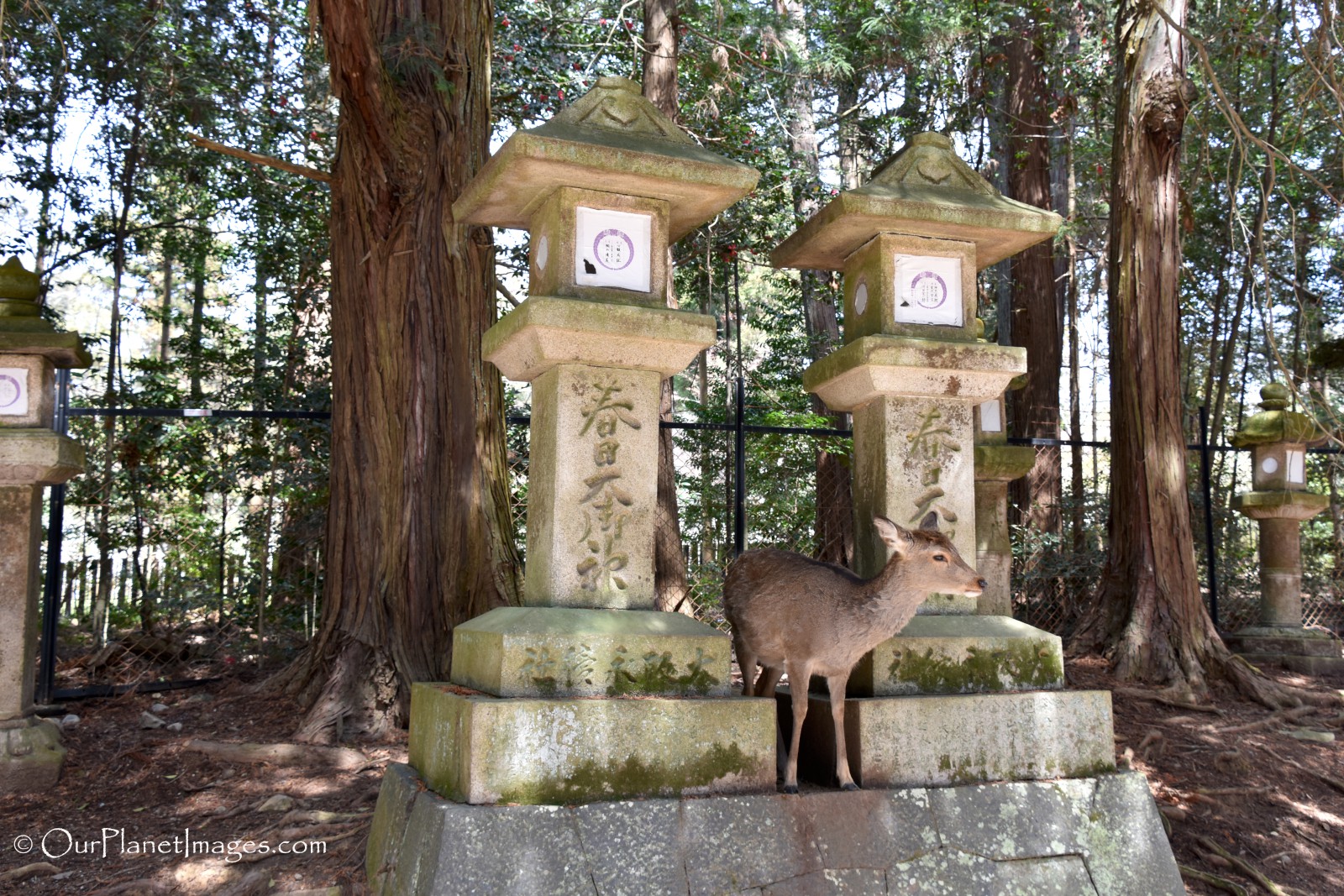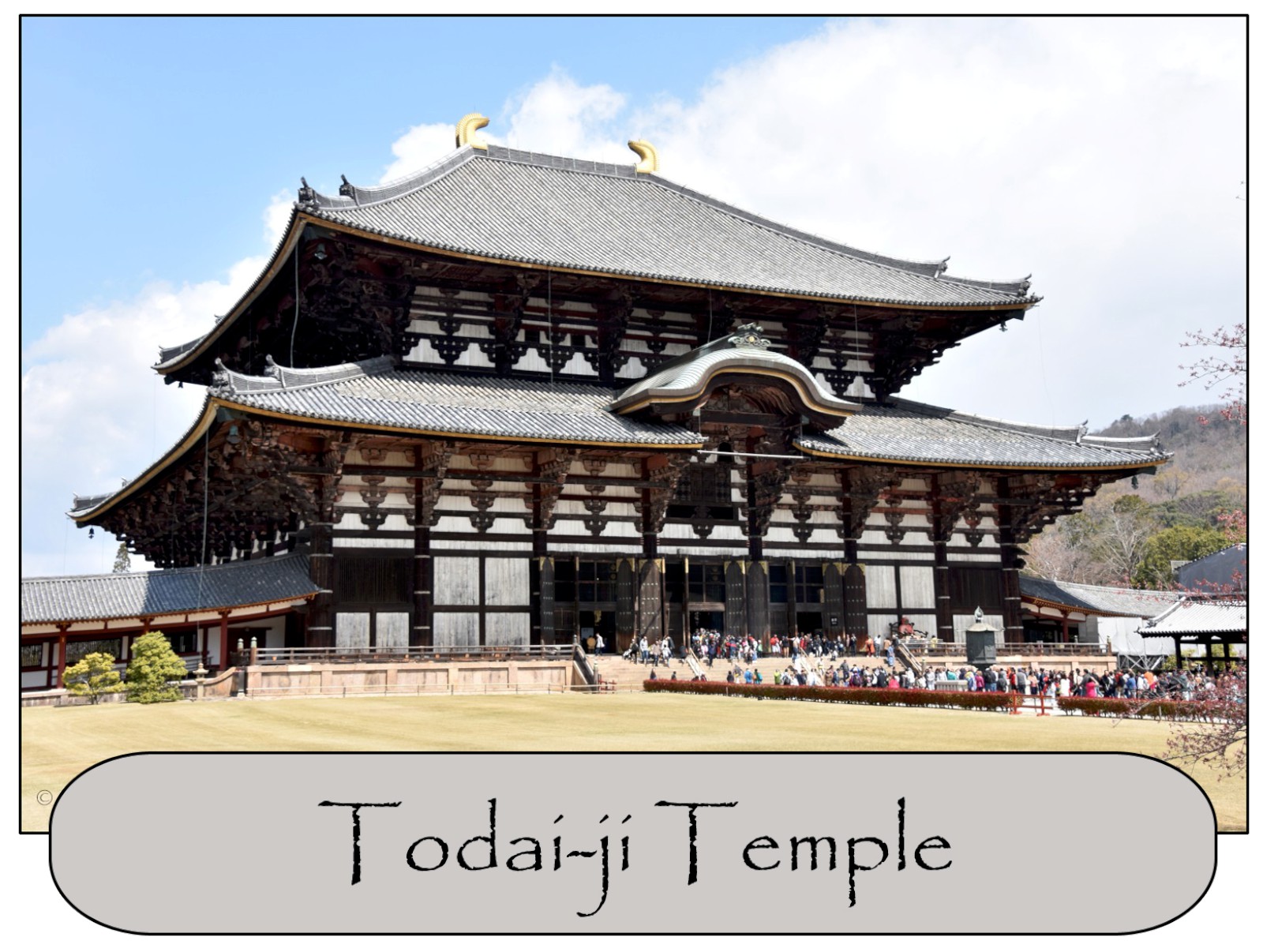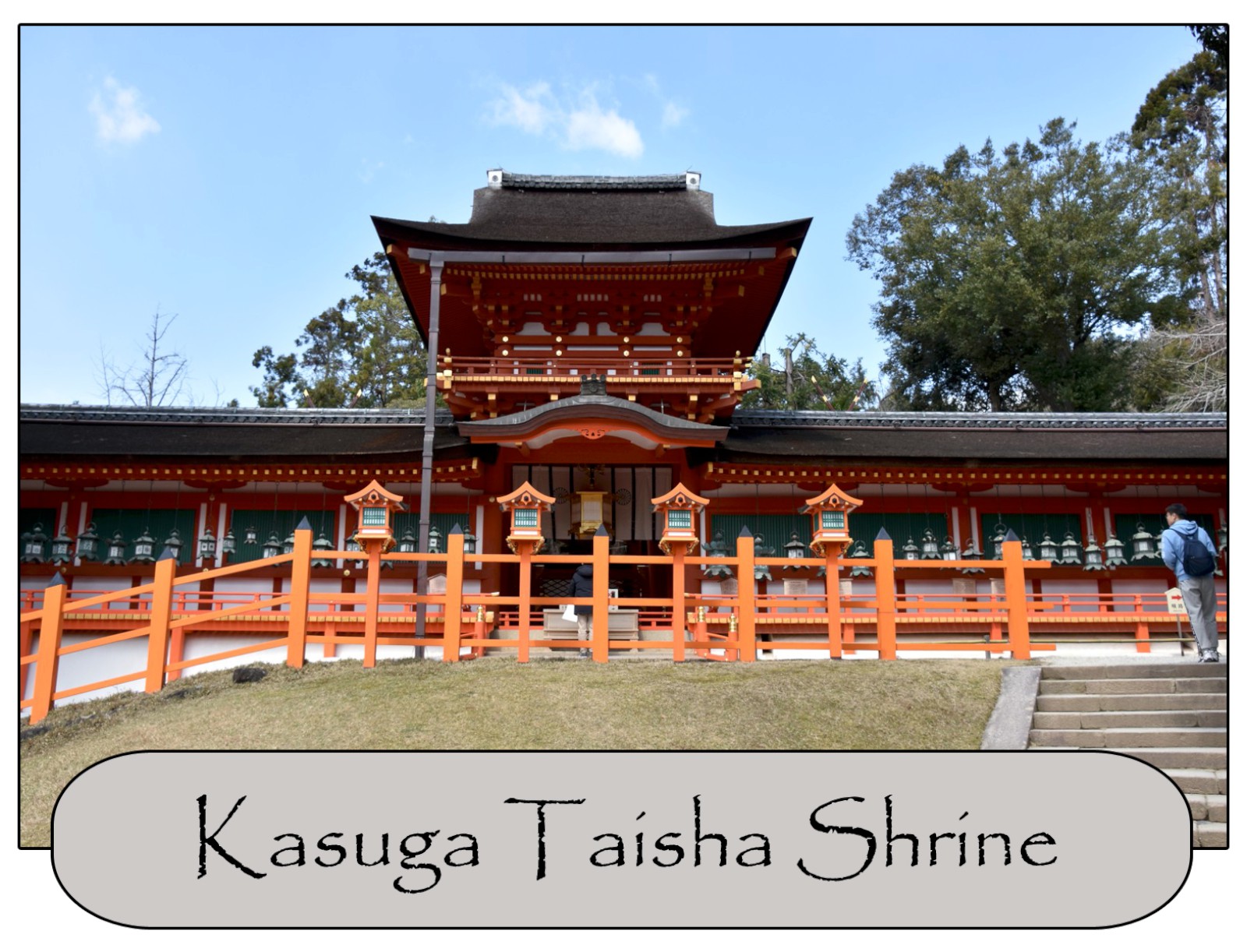Nara Park is a large public park where visitors can explore magnificent temples and shrines, walk through natural forest and have a close up wildlife encounter with wild-roaming deer all in one place.
Nara Park is located in the city of Nara at the foot of Mount Wakakusa near Osaka and Kyoto, Japan. The park was established in 1880 and is one of the oldest parks in Japan. The park covers an area of 660 hectares (1,630 acres) and is the location of Nara’s main attractions including Todaiji Temple, Kasuga Taisha Shrine, Kofukuji Temple, Nara National Museum and is renowned for having hundreds of free-roaming deer.
Deer Everywhere
The most unusual and one of the top attractions of the park is seeing the herds of free-roaming Sika Deer that have make Nara Park their home. There are over 1000 deer that wander through the park and they can be seen literally everywhere that you go in the park.
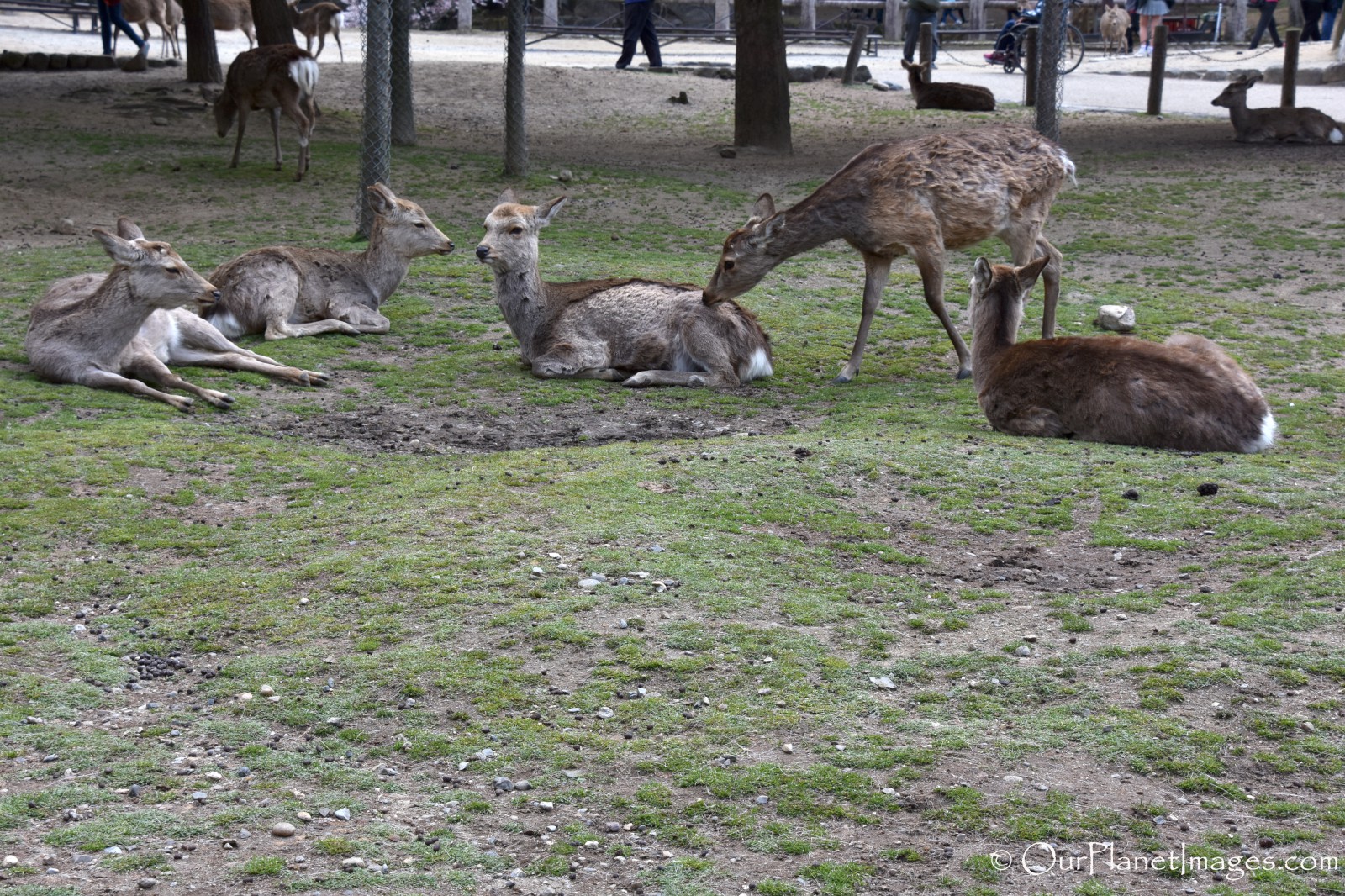
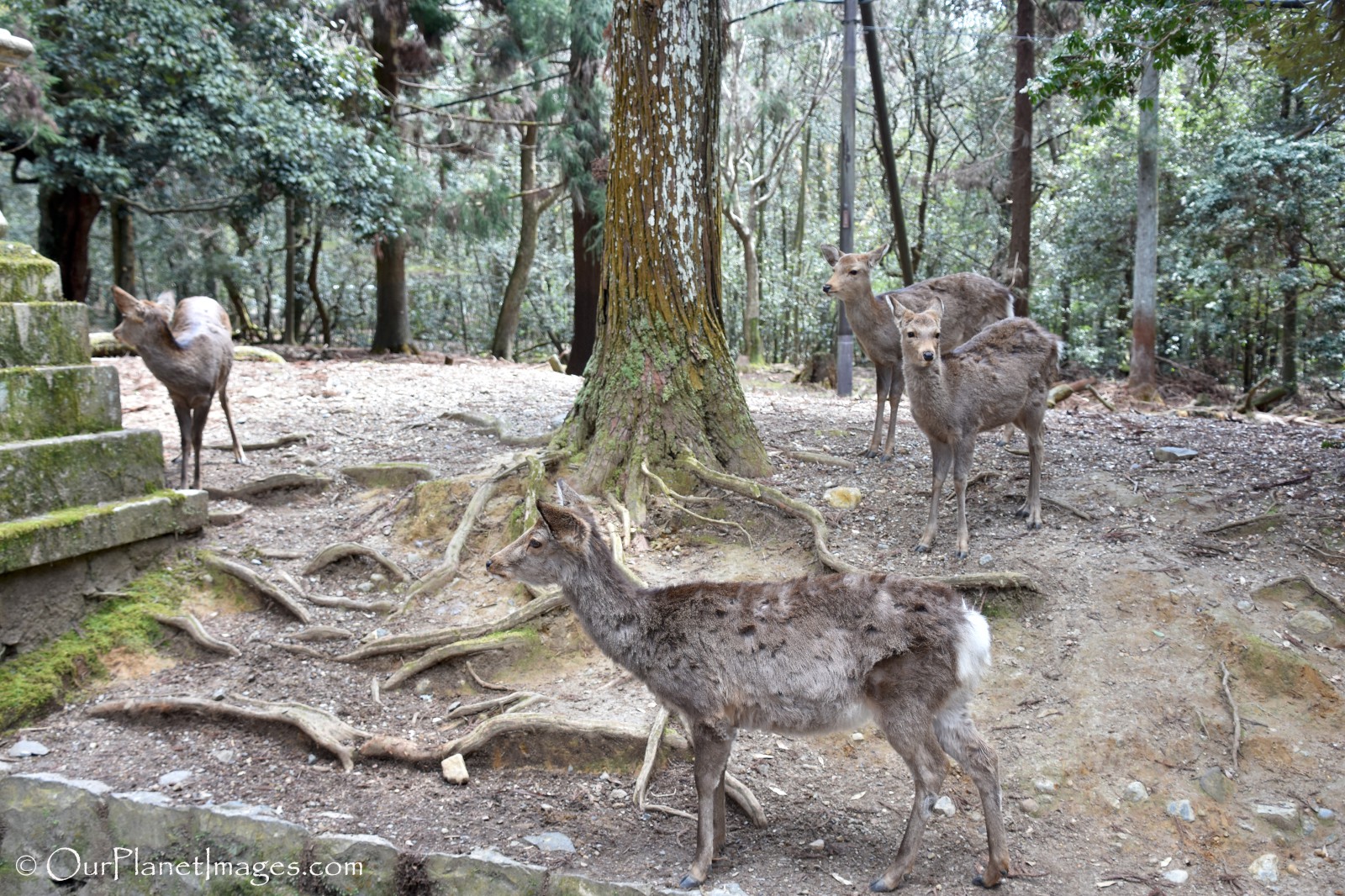
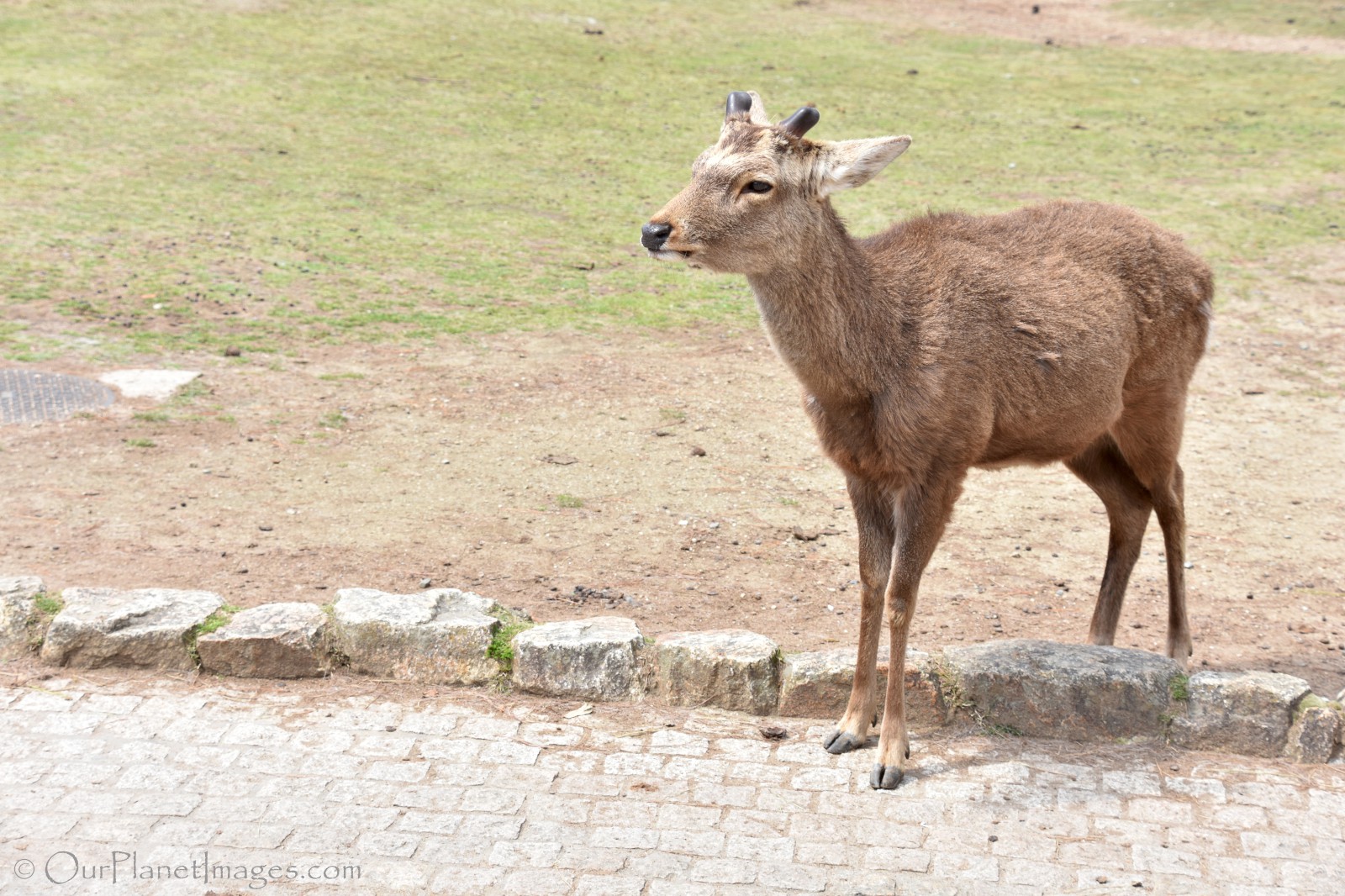
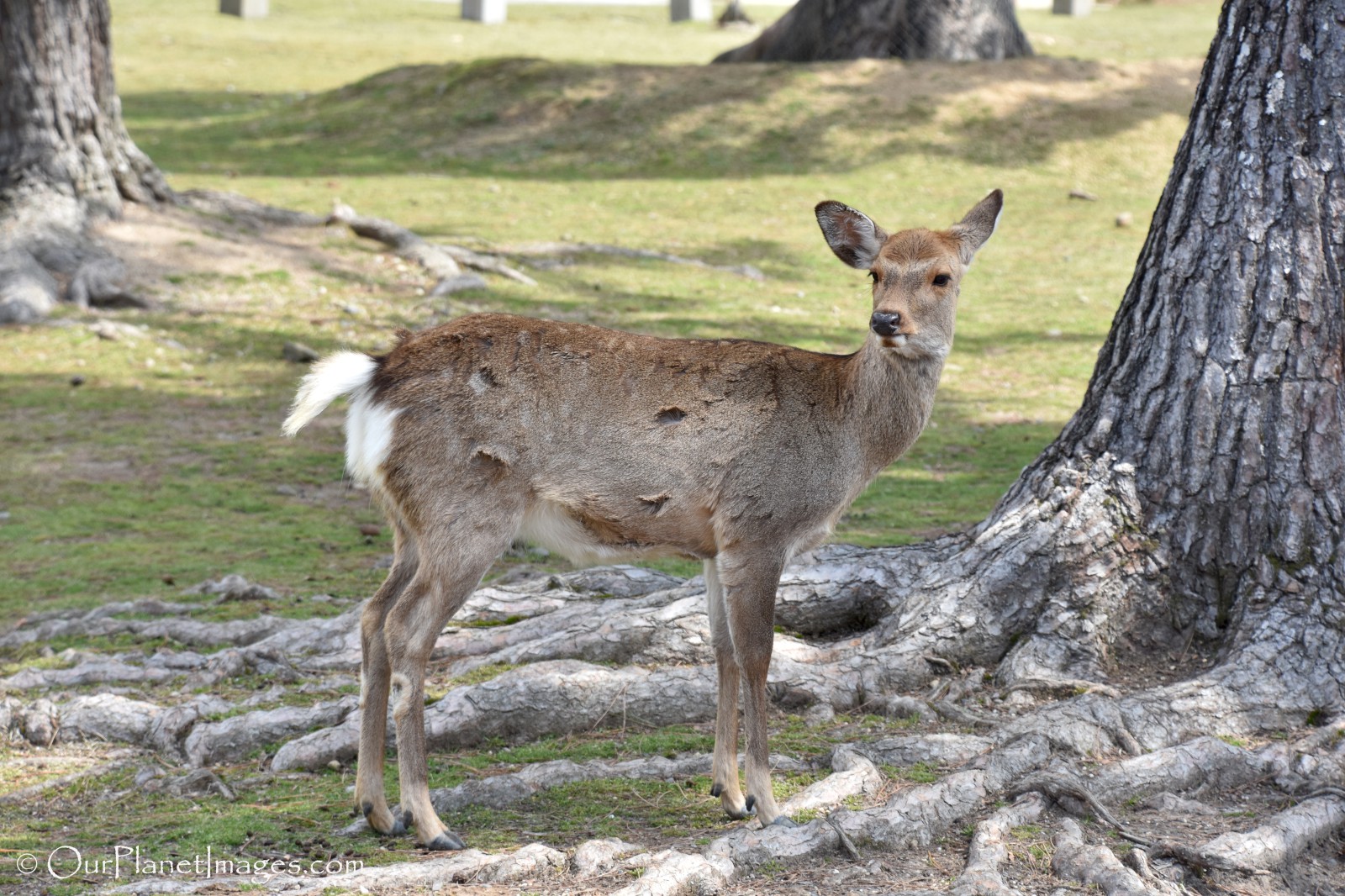
Feeding the deer has become one of the activities that most people look forward to when they visit the park. The deer are surprisingly tame and they will walk up to you if they think you have deer crackers which are sold around the park.

Bowing is a custom in Japan and the deer have learned to bow to visitors to ask to be fed and sometimes they bow again after they have been fed. It is an amazing phenomenon to watch deer bobbing their heads up and down to people almost like they are part of the culture.
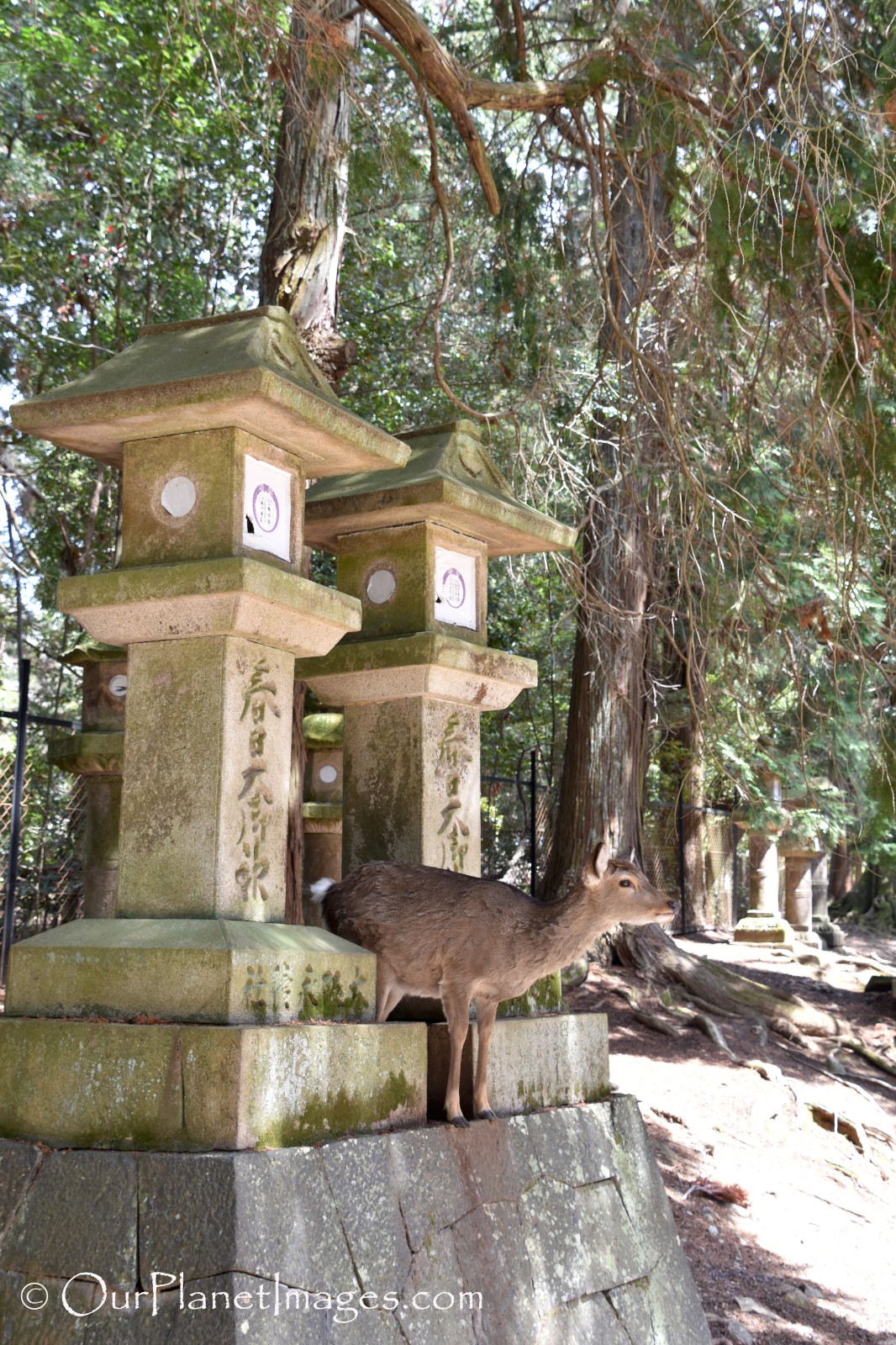
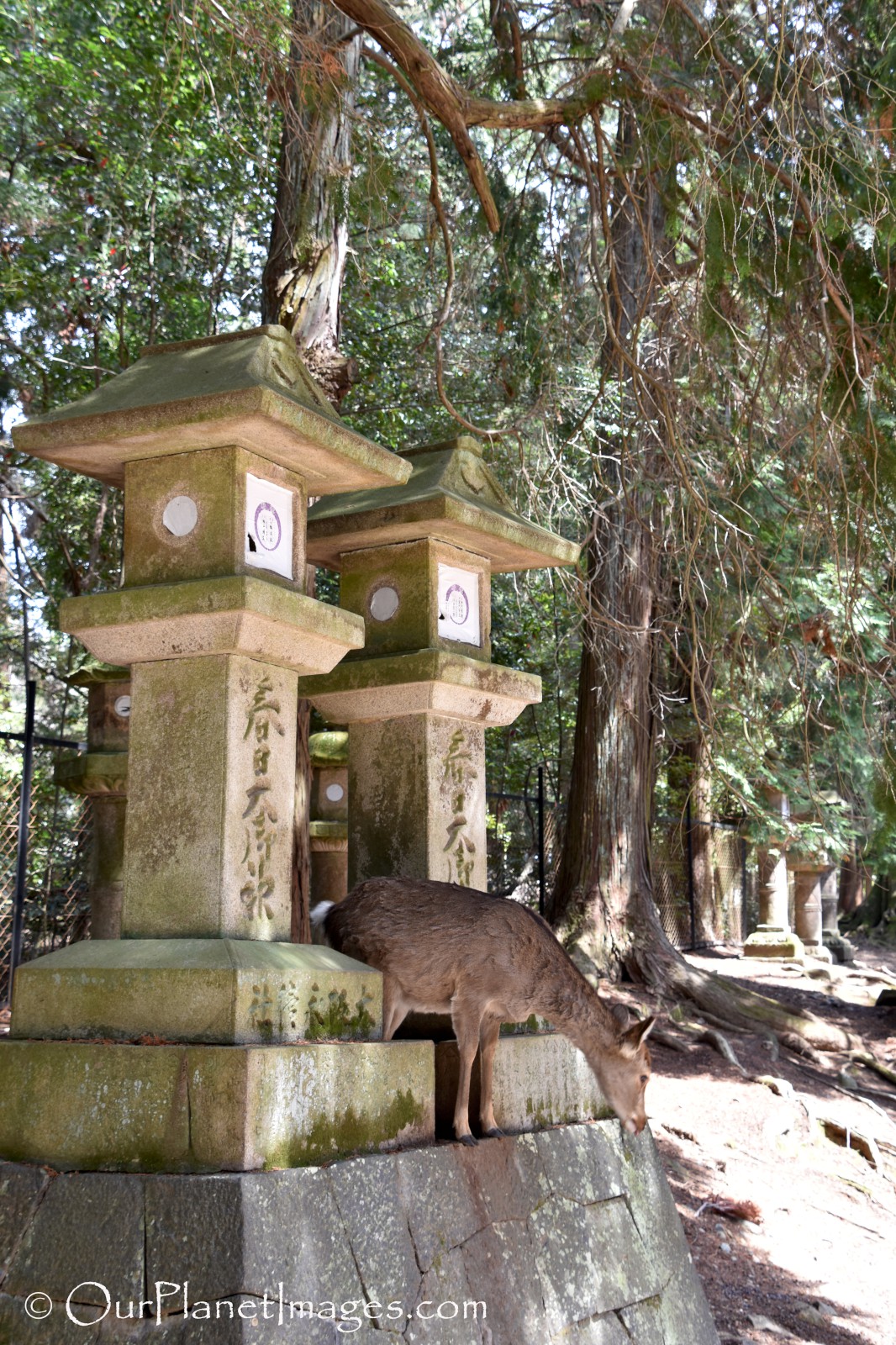
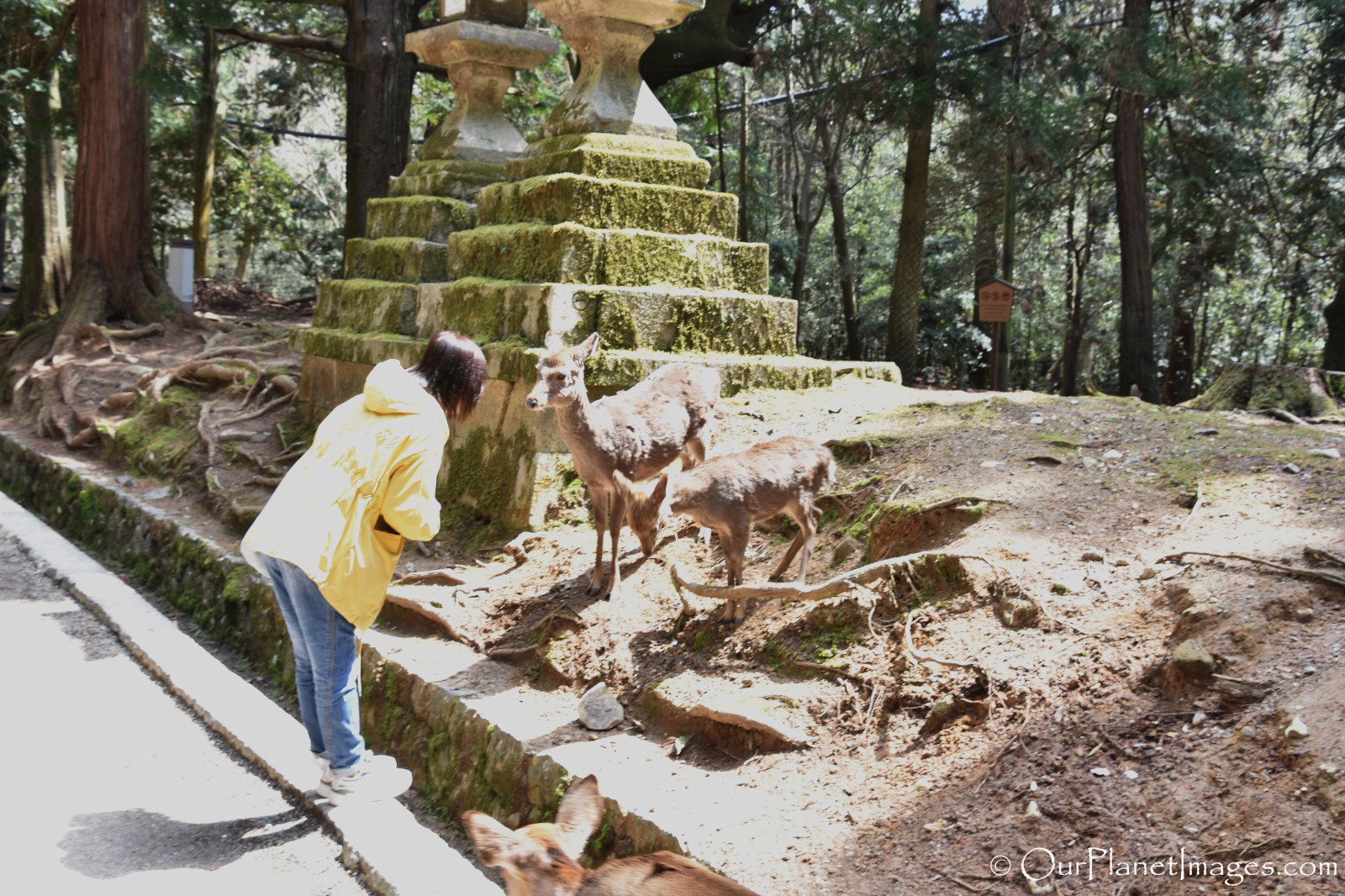
Nature and trails
The park’s attractions are outstanding but sometimes it is nice to take a break from sightseeing and being around hordes of tourists. Nara Park has trails that go into Mt. Kasuga Primeval Forest where visitors can wonder along trails through natural landscapes surrounded by native trees.
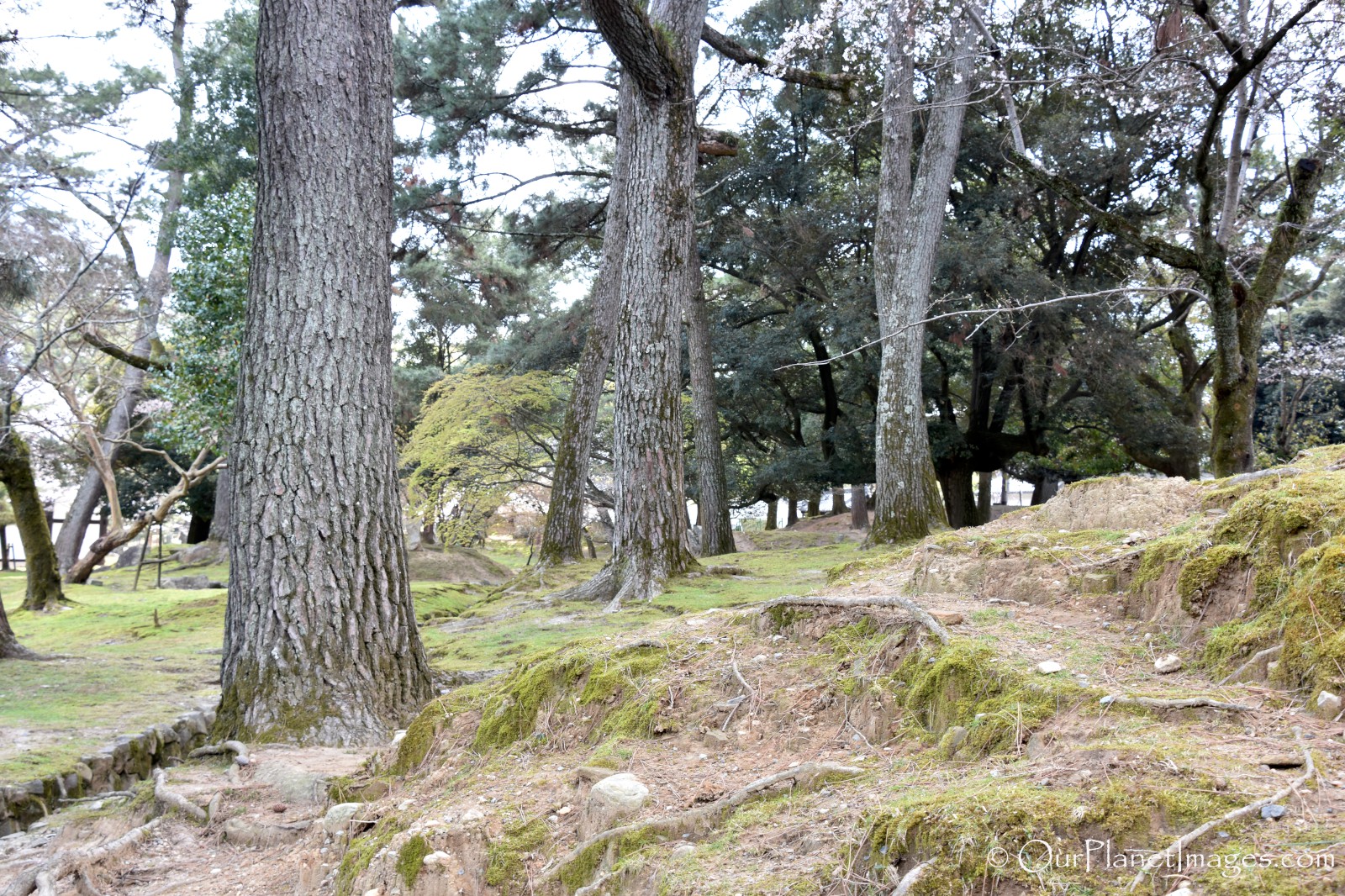
Famous temples and shrines
The temples and shrines of Nara are much older than the buildings in Kyoto. Two of the most famous religious sites that are located in Nara Park are the Todaiji Temple and the Kasuga Taisha Shrine.
The Todaiji Temple is the most prestigious temple in Nara and is highlighted by its 15 meter high Budha. On the other side of the park is the Kasuga Taisha Shrine which is noted for its distinctive vermillion color with countless lantern throughout the facility.
I have already published a detailed post on both of these sites and a link to these posts are provided at the bottom of this post.
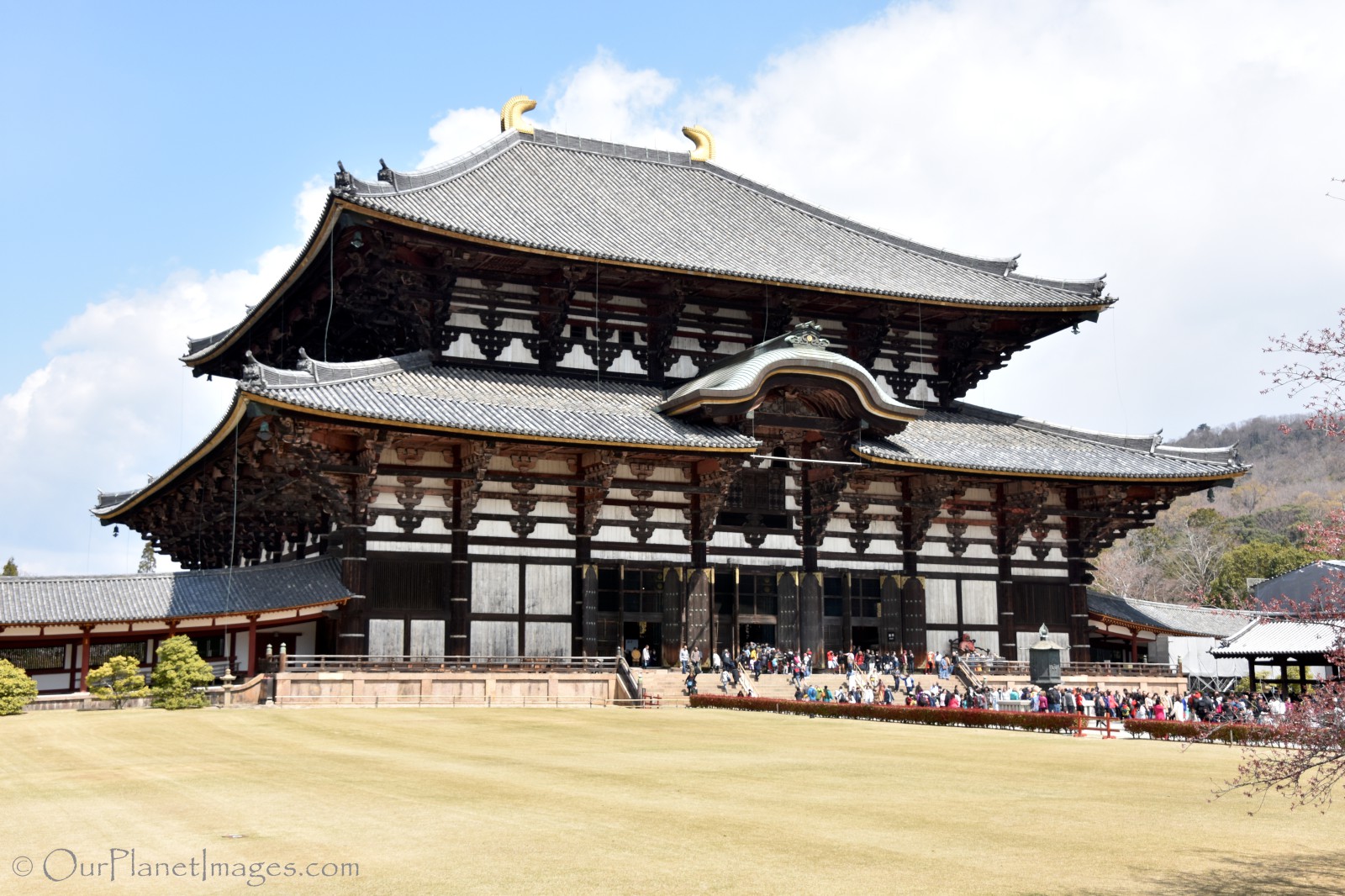
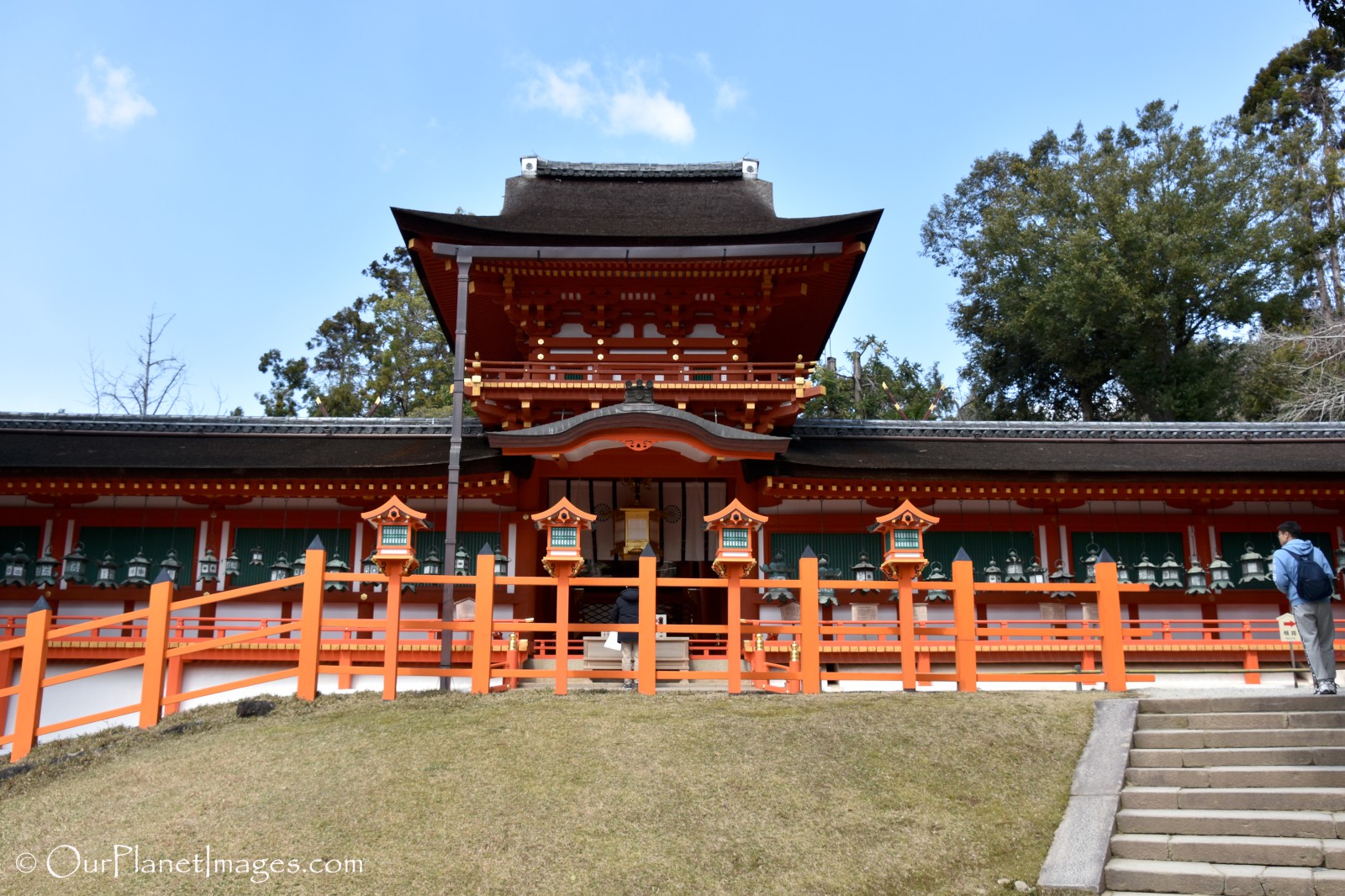
Golden Sorin
Near the Todaiji Temple is a golden sorin which normally crowns the roof of each pagoda. The one standing next to the temple was once placed on the roof of one of the two 100 meters high pagodas that has burned down. The golden sorin is the only remnant of them and is place where one of the pagodas once stood.
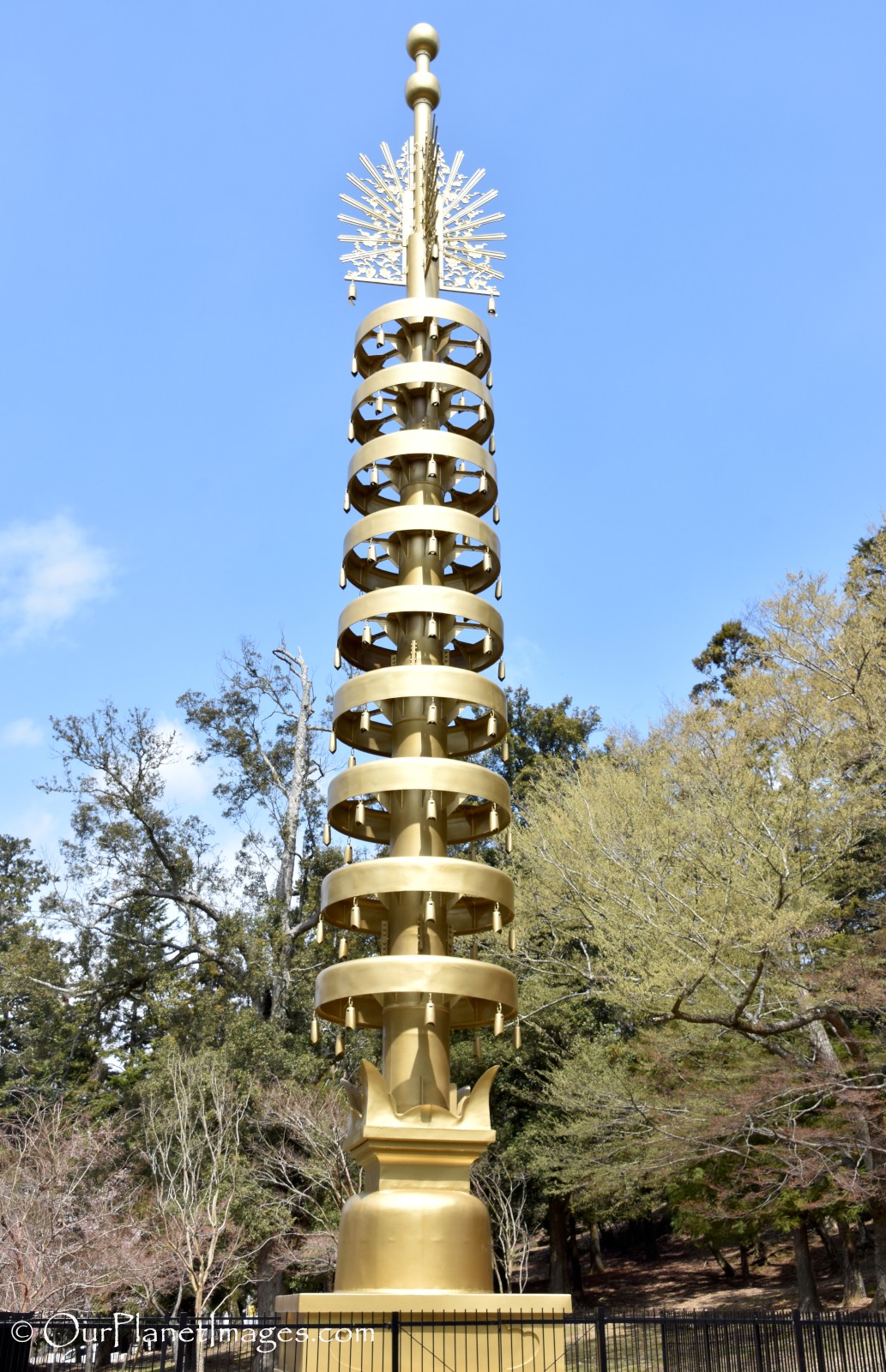
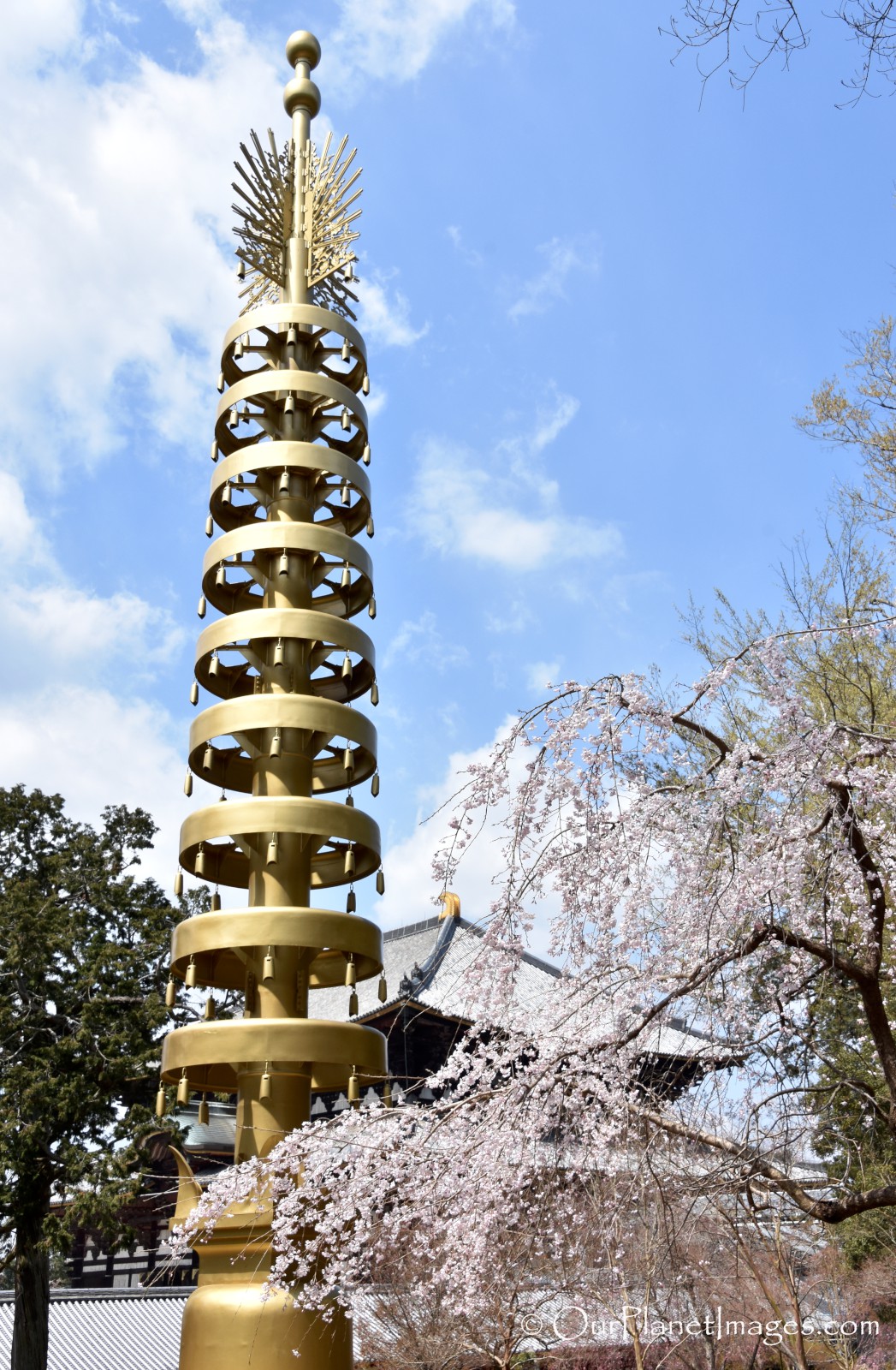
Pagoda and other religious buildings
Just inside one of the entrances into the park is a 50 meter tall pagoda. This pagoda may be much smaller than those that burned down but it is still impressive and it is the second tallest five-story pagoda in Japan.

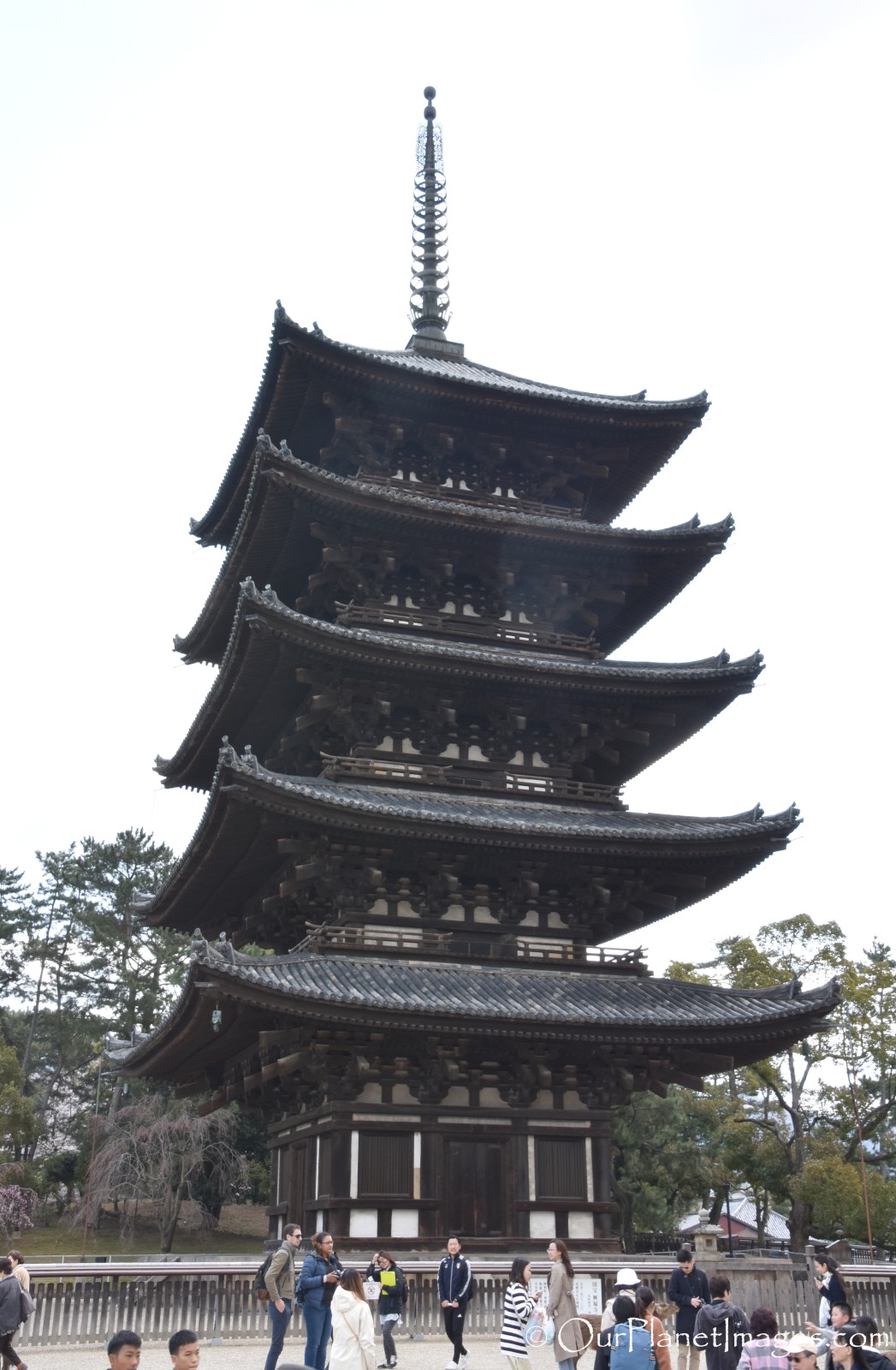
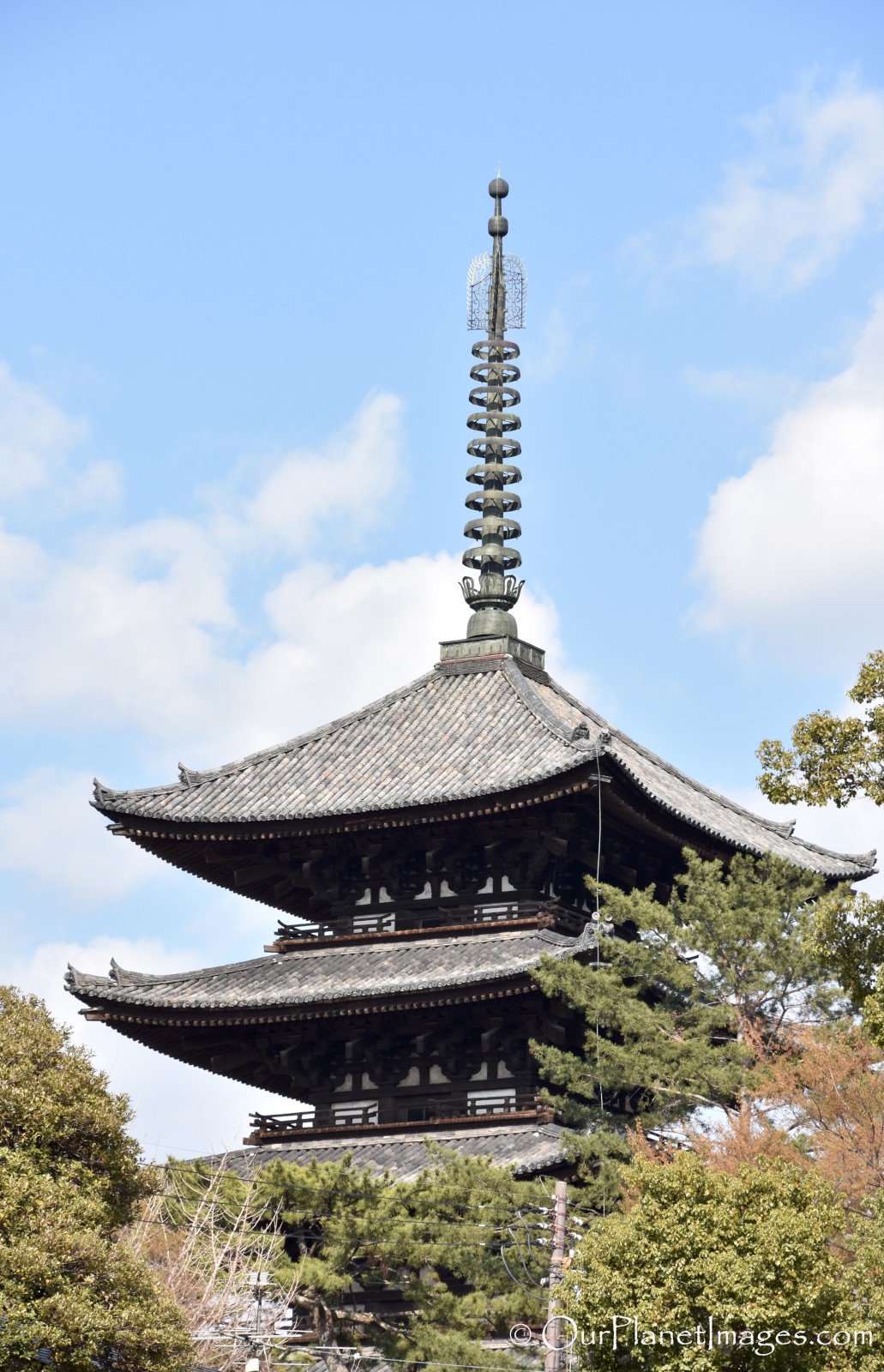
Some of the other religious building that are near the five-story pagoda are shown in the following photos.
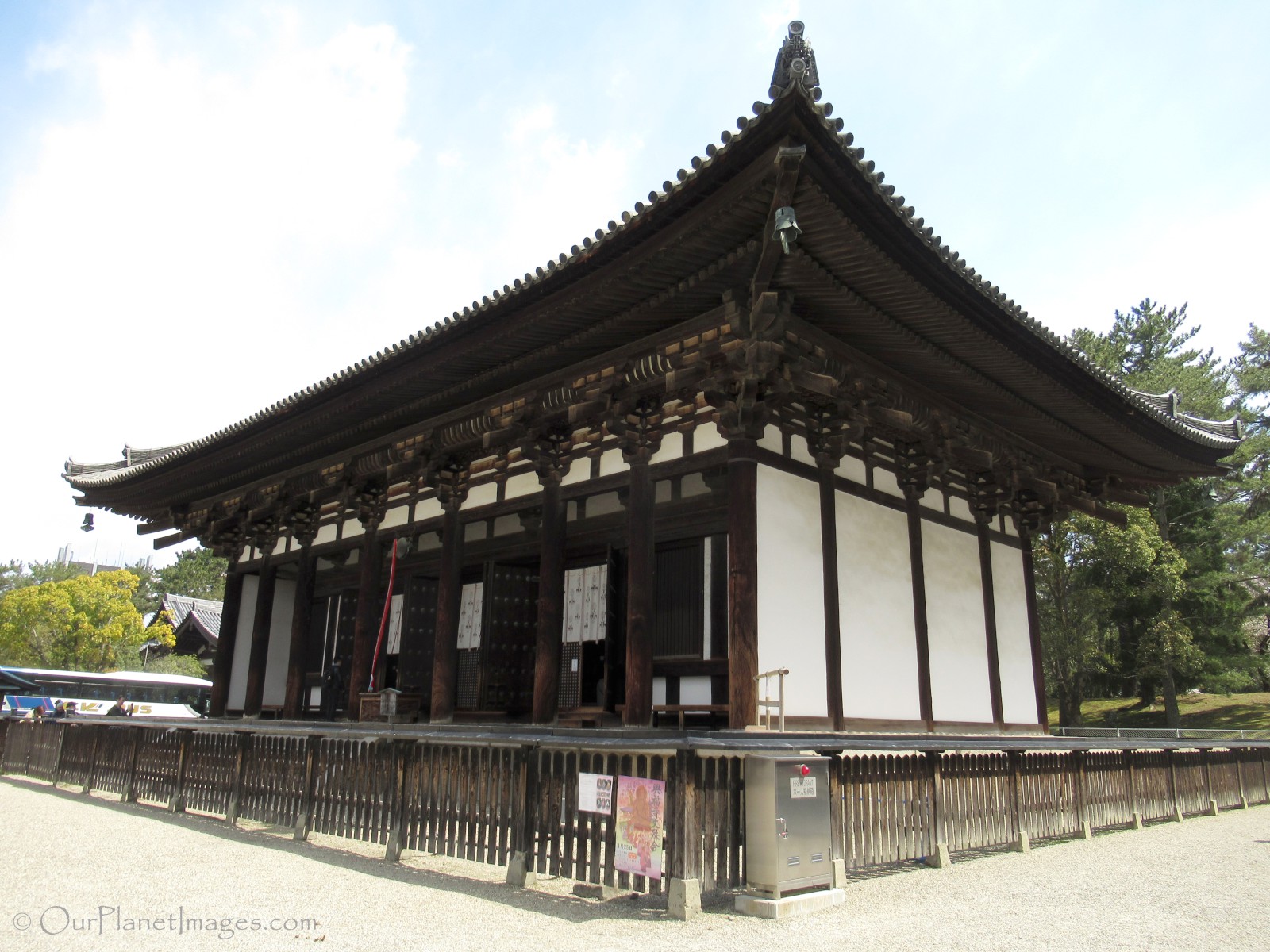
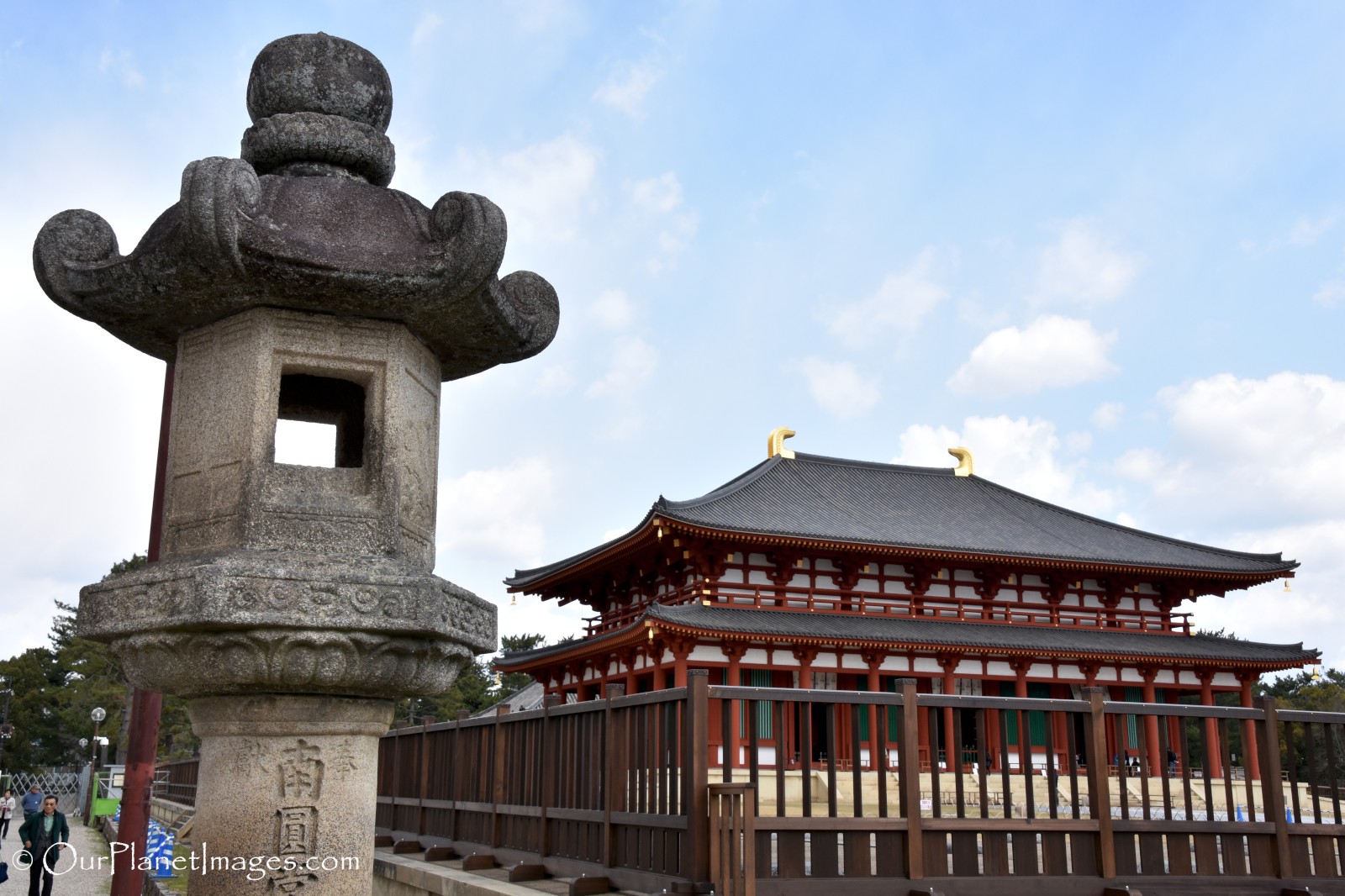
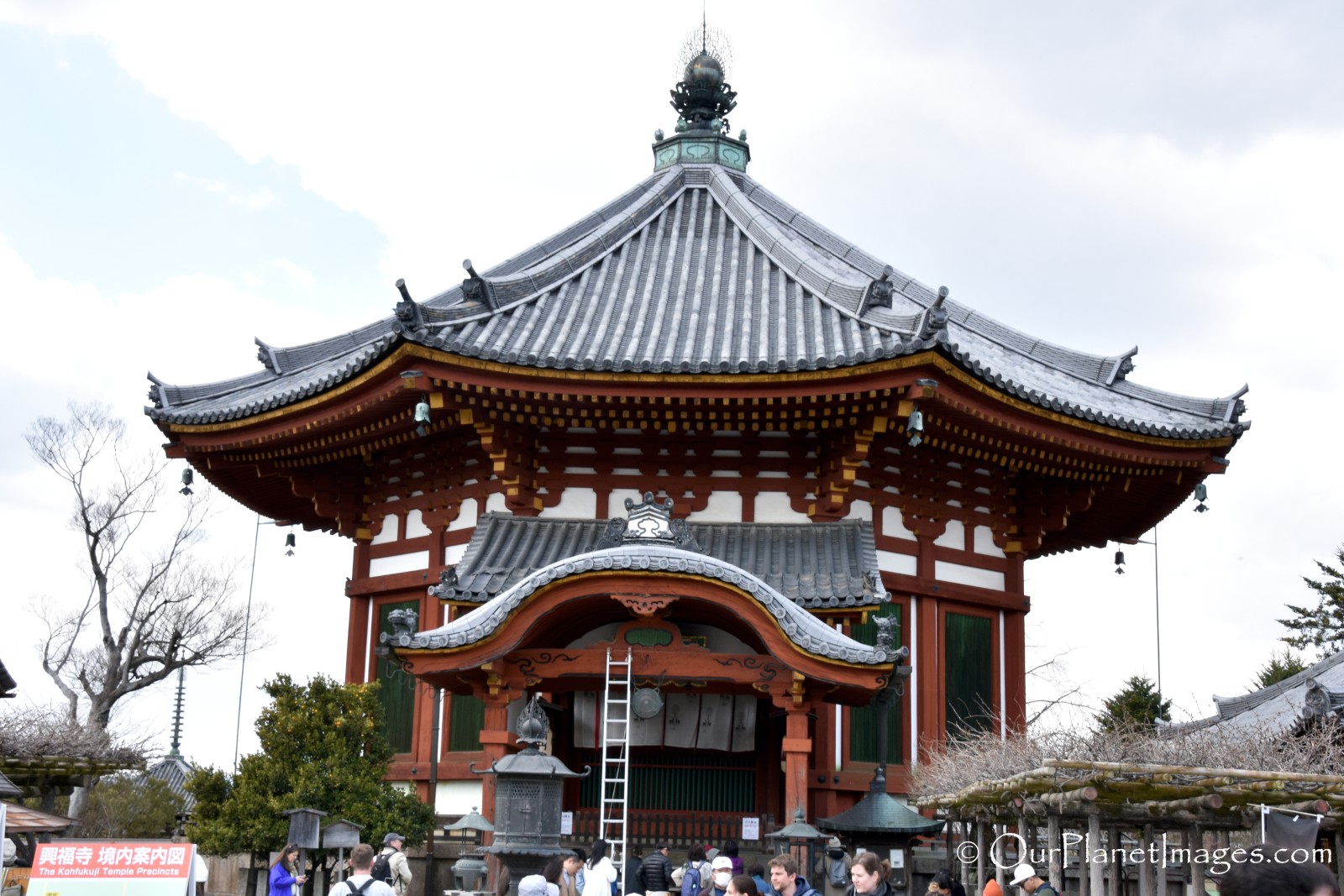
The Dust on My Shoes
I always enjoy going to city parks during my travels because they are peaceful place where I can escape from the highly populated tourist locations and they normally give me a chance to see some of the local flora and fauna.
Nara Park is unique from most city parks that I normally visit because of the large number of friendly deer and because of the famous Todaiji Temple and Kasuga Taisha Shrine.
The Nara Park is a short train ride from Osaka or Kyoto so it is an easy day trip from either city. The Todaiji Temple and Kasuga Taisha Shrine are both impressive places that will be unforgettable memories from visiting Japan and any mention of Nara Park will instantly put a smile on your face when thinking about the bowing deer.
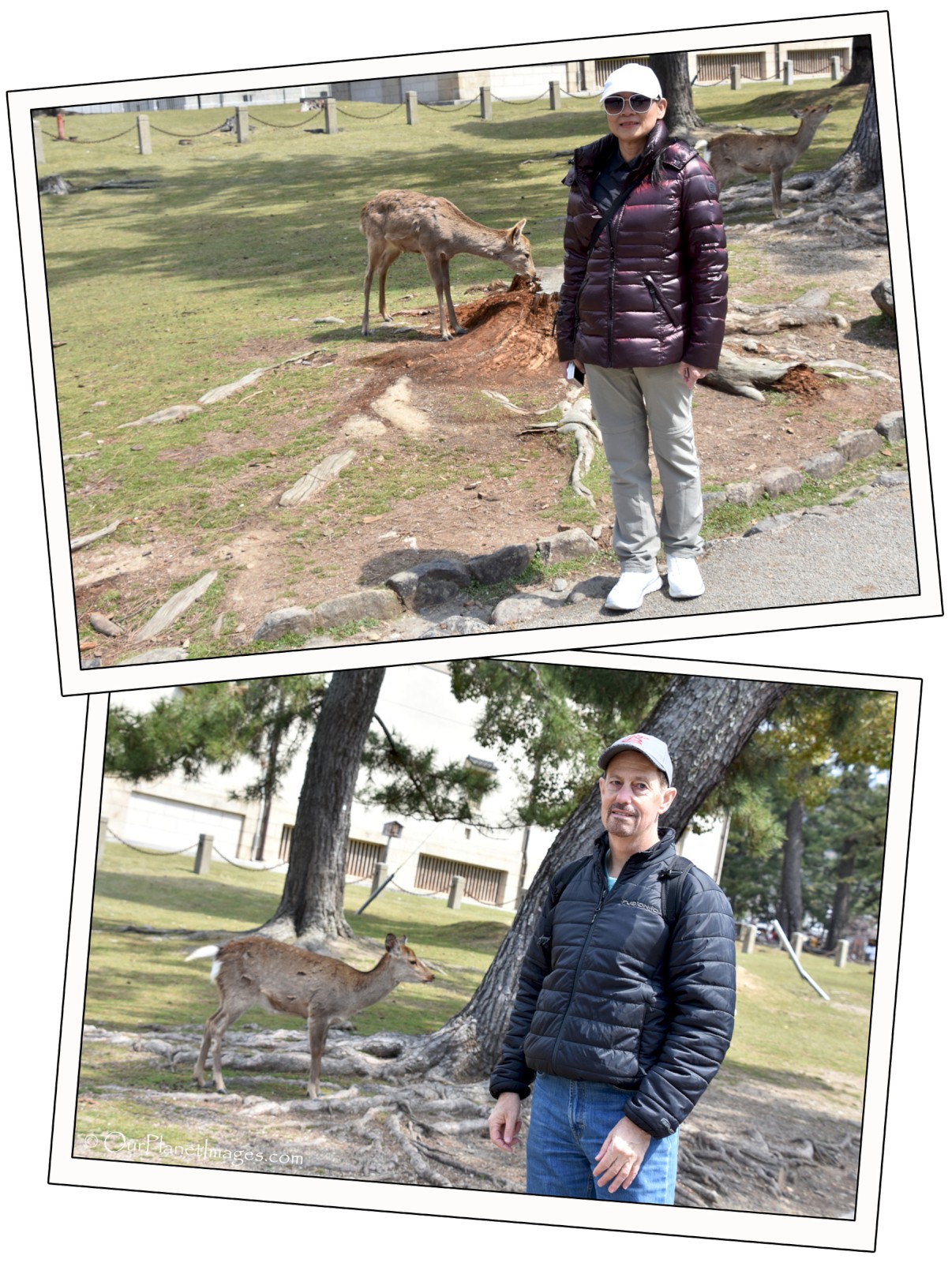
Traveling is not all about seeing famous places. Sometimes it is about relaxing and enjoying peaceful places with unique nature and wildlife. Nara Park is a place where you can actually do both.
